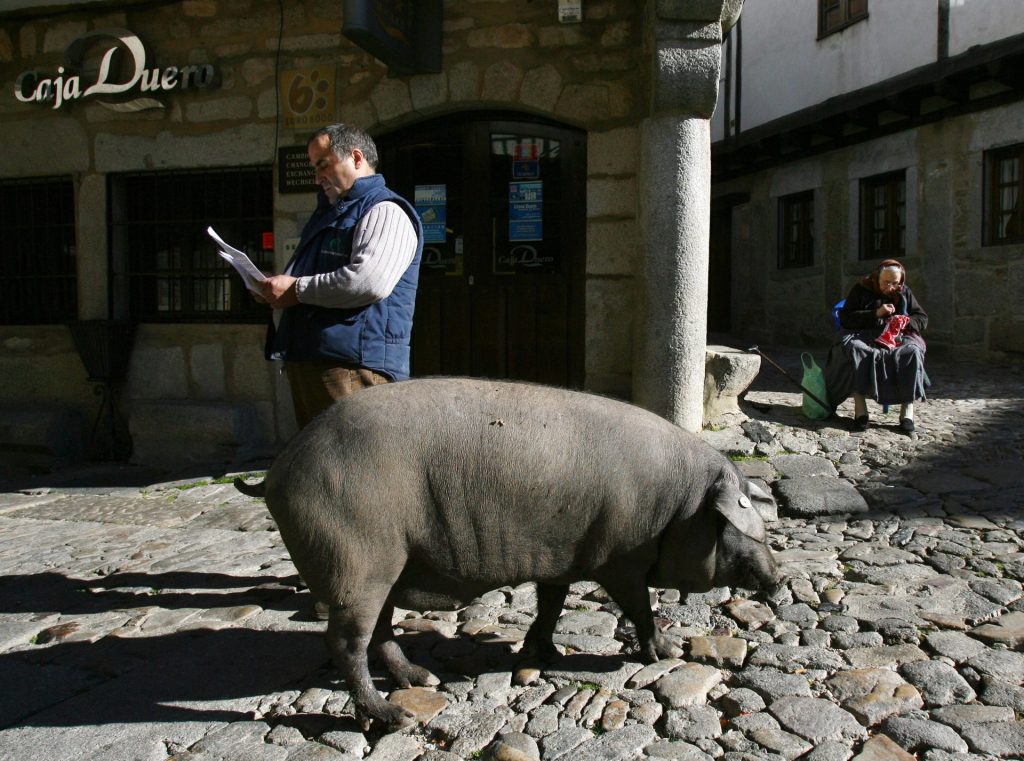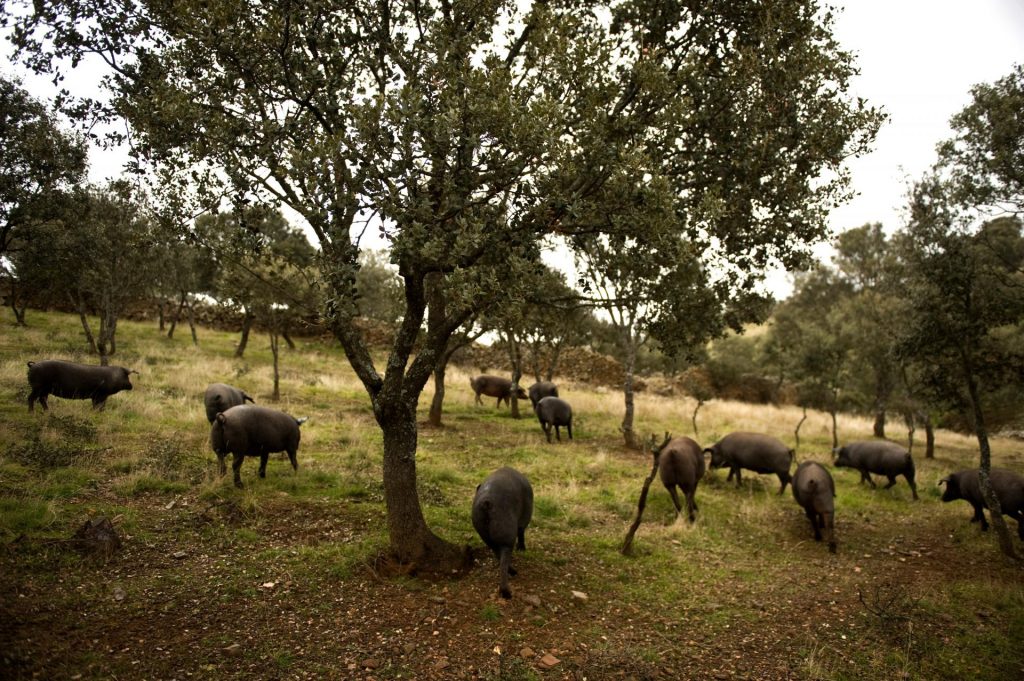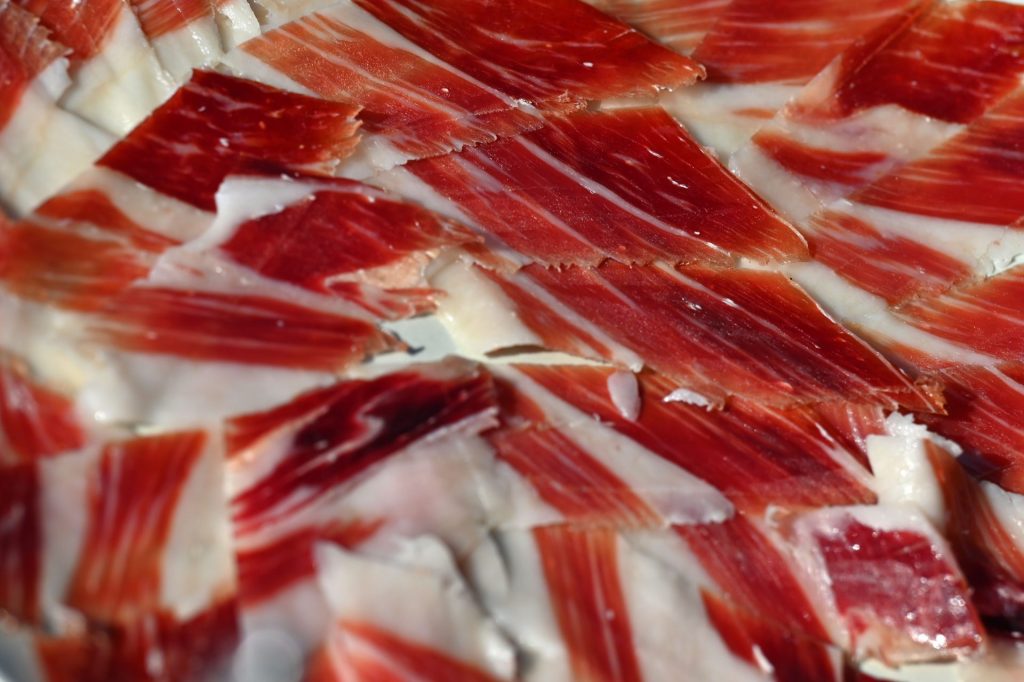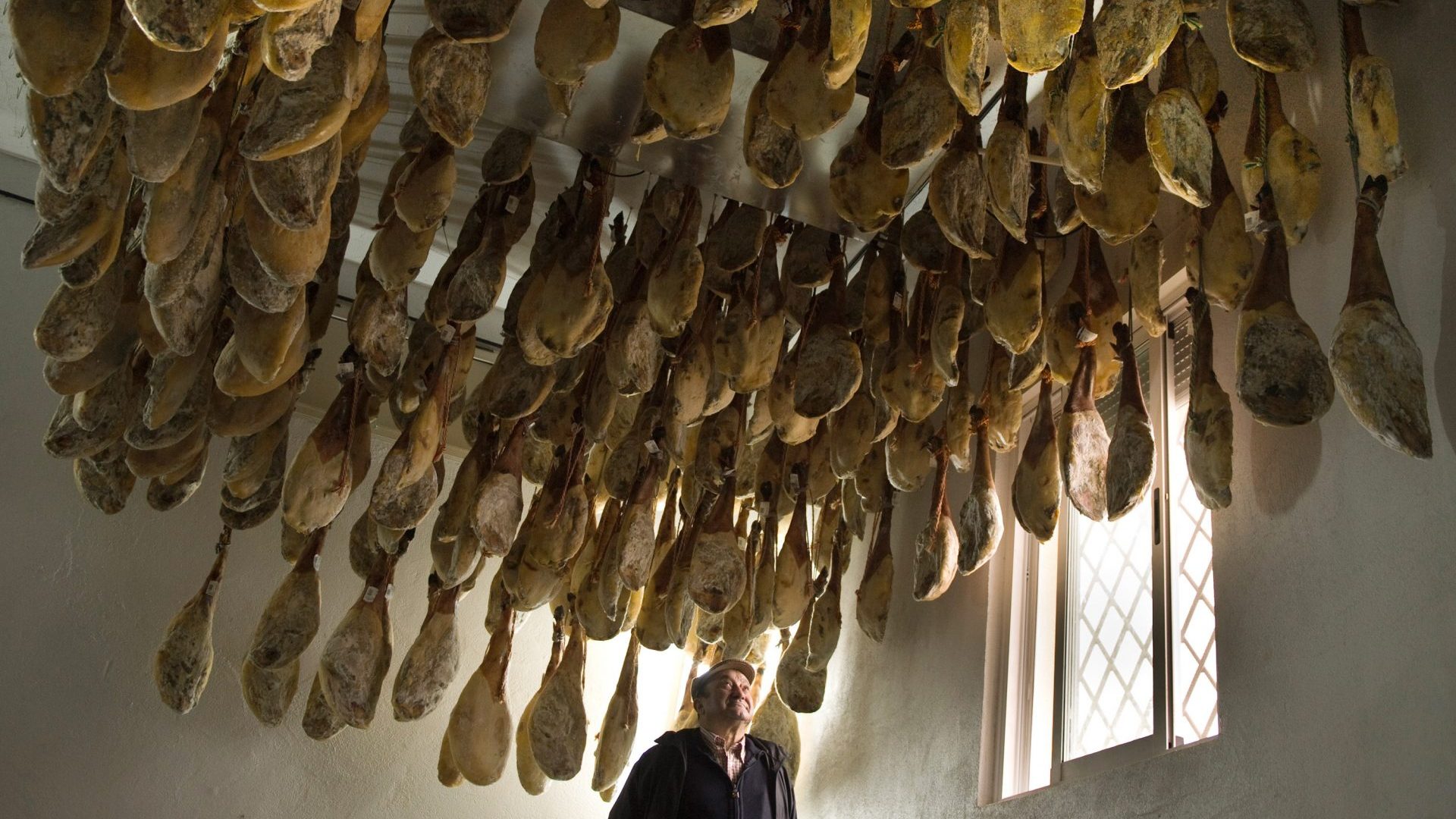Three decades ago, when Britain’s arthouse cinema audiences delighted at the debut of Penélope Cruz in Jamón Jamón, real Spanish ham was a rarity on these shores – the preserve of only the highest-end restaurants and the most afluente, opulento of UK homes.
Today, the market is more like the climactic fight in Bigas Luna’s movie, in which ham legs are used as blunt-force weapons. Jamón ibérico can be found in middling restaurant chains and discount supermarkets alike; you could until recently buy an entire leg in Aldi for £69.99. The variety on offer was hardly the most prestigious, but it was no luncheon meat either.
Yet with extra demand come extra problems. The evolving British palate has led to the Spanish upping production. Exports have been climbing to populate the buffets of exigent Britain, and this, coupled with a changing and increasingly punishing climate, has wrought new and ungainly challenges on its continental producers.

It is among the higher echelons of jamón ibérico creation that farmers are encountering the most difficult of circumstances. In Spain, rising temperatures and low rainfall have jeopardised a crucial ingredient of the most revered of all hams, the jamón ibérico bellota, which costs as much as £88 per kilo and is sold around the world. That ingredient is acorns, something hungry pigs gorge on in the oak forests – known as dehesa – in Spain’s rugged north-west.
In recent years, pure-bred Iberian pigs, the breed used for the best jamón ibérico bellota, are finding fewer acorns as oak trees struggle in more exacting summers. Last year was the warmest on record in Spain; it was the third driest. In Extremadura, one of four small regions with official denominación de origen status, rainfall has fallen by 35% in the last 50 years. It has led to a 20% drop in production.
Germán Arroyo, the meat buyer for the restaurant group Brindisa, which specialises in Spanish foods, tells the New European: “The situation [in Spain] is quite dramatic. It’s very difficult for farmers.
“Everywhere around the world is struggling and Spain is no exception. At the moment, the cost of production is up, labour costs are up – by 40% in some cases – cereal (feed) prices have doubled, and all these small farmers are really struggling to produce ibérico pork and ham.”
Arroyo says some farmers have cut production by 50% due to escalating costs and numerous buyers refusing to pay more. To consumers, the impact has yet to filter down – plates of jamón remain unrelenting in the dining rooms of Britain – but there will come a tipping point, Arroyo says.
“Ibérico ham isn’t going up by too much right now,” he explains. “Cured products might have seen a slight increase. They have a long duration – a lengthy curing process. The hams we’re using at Brindisa now were made in 2018 and 2019. It’s in the food chain where there are problems now. In a year or two, customers will face higher prices.”

José Pizarro, who owns several Spanish restaurants in London, says “it is undeniable that climate change is affecting absolutely everything across agriculture, farming, viticulture,” and his beloved ham is no exception.
“I choose suppliers that work to protect the environment and nature,” Pizarro tells TNE. “(We must) develop natural ecosystems, reducing the impact of climate change by preserving the breeds of the area and investing in renewable energy like solar panels.”
But in a country where pigs are said to outnumber people – at least according to figures from 2018 – the sustainability and longevity of pork is being scrutinised.
Arroyo, like most involved in good food, blames cheaper meats made in high-intensity ways for our waning food system. Few would argue. It is ironic that it is the most valuable and carefully made products that are feeling the immediate effects.
Francisco Espárrago, the president of Señorío de Montanera, which makes top-level jamón, recently told the Guardian his optimism was failing: “The dehesa is made up of holm oaks that are native to damp climates, so it’s a relic of when the climate here was different from now. The trees struggle to survive the long, hot and dry summers we’re having now.”
As is the case with the likes of fine cheeses and wines throughout Europe, regulations in Spain disallow the import of acorns. Farmers, Espárrago added, wouldn’t be keen on the idea anyway – disrupting traditional methods, decades in the making? Try that with Cornish pasty aficionados or cheesemongers in Cheddar.

While it is the highest-quality food that is under siege, it is poorer communities that stand to lose out. As is so often typical, the jamón coveted by diners everywhere is vital to local economies in north-western Spain, a part of the Iberian peninsula long ruptured by unemployment.
The academic and climate specialist Prof David King says the changing climate will hinder farming, particularly in countries such as Spain.
“Jamón ibérico is a very special, very local product,” he says. “It’s delicious, and you can’t deliver it anywhere else.
“The fact farmers are seeing problems comes down to a global problem. The Arctic Circle has been heating up at four times the rate of the rest of the planet. Greenland ice is melting irreversibly, and when all that is gone, sea levels will have risen by seven metres. I’m talking to you from Cambridge and we’ll be under water before seven metres.
“If things carry on in this way, the situation is going to get horribly worse – for Europe and around the world. “What’s happening in Spain is an indicator of this. It’s been one of the hardest hit by rising temperatures and lessening rainfall. Farming practices need to change.” Nobody, save for vegetarians and vegans, perhaps, would want to see the end of jamón ibérico, which may or may not seem trivial when considering the demise of the world under floods of ice and fire.
How farming practices might change to better accommodate jamón ibérico in the modern world, we don’t yet know. Spanish farmers will be forced to adapt. It must not be lost. Because here is the finest ham in the world, famed for its smooth texture, its rich, savoury taste and its beautiful marbling. The ham is made to specific, attentive methods, and to farming practices that go back generations. The pigs, whether Blackfoot or Duroc – another breed used in some jamón – are free to wander the woodlands, eating contentedly.
Mighty oaks from tiny acorns grow, and Spain needs to sort out its acorns. Ham fans will hope it does so quickly.
Josh Barrie is a writer who specialises in food and drink




